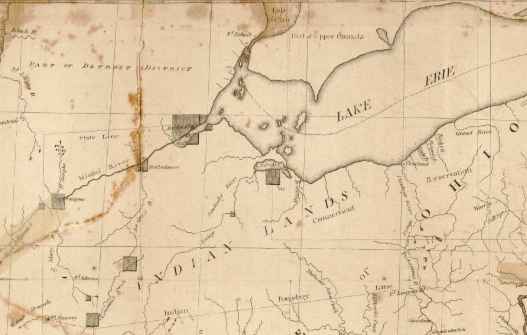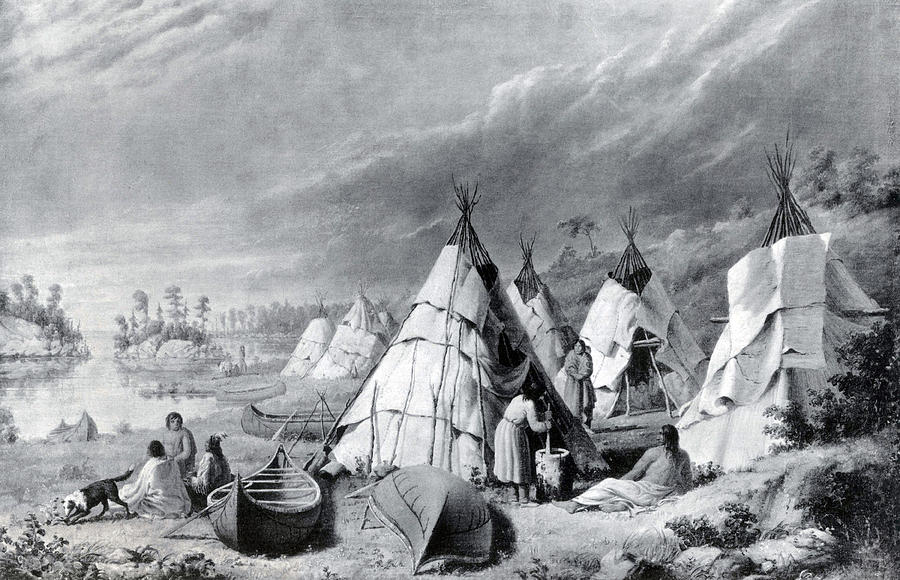The Great Black Swamp
was a network of marshes that claimed the majority of Northwest Ohio. It is believed to have been caused by a massive glacier that sat, flattening the land, then melting to fill it with water. Due to its harsh nature, the land had been uninhabitable for people. Native Americans would often settle near it to use as hunting grounds, but rarely in it.


The Treaty of Greenville
was signed by the U.S. government and Wyandot’s along with some other local tribes in 1775. This secured the majority of Ohio for European settlers and the US government, pushing the Natives toward the Black swamp. The Natives made the most of this less than favorable deal, building villages around the swamp. This let them stay dry but gave them access to the wildlife and resources within. This treaty however, like most US and Native treaties, was destined to be broken.
European settlers began pushing in.
Settlers of Ohio soon discovered that, while uninhabitable in its current state, the Black swamp contained nutrient rich soil perfect for farmland. In time, people began farming the outskirts of it, and a (rather treacherous) road was cut through it, connecting Sandusky to the Toledo Strip. They slowly began pushing in, and driving the natives back out. However, cultivating this wild land wasn’t easy, and progress was incredibly painful, dangerous, and slow.


Wars in the area
were greatly impacted by the black swamp. When the British threatened Detroit during the war of 1812, the U.S. army rushed to defend it. However, the black swamp made that difficult. General William Hull and his troops had to work their way through the dark and murky swamp to make their way there. On the way, they had to widen the muddy road to make room for their carts. In the end, the British tricked General Hull into surrender, aided perhaps by the hit to morale of the long journey.
The swamp may have also been responsible for keeping the Great Toledo War from escalating too quickly in 1835. The swamp made a natural barrier between the Toledo strip and the rest of Ohio. This slowed down Ohio’s Militia from getting into the area, and kept Michigan’s Militia from attacking other parts of Ohio.
The draining of the swamp continued
and through strength of will and some clever engineering, it was soon completely drained. With the widening of the road in 1812, the draining of the swamp seemed slightly more manageable, and with the new trade city of Toledo in Ohio’s hands, it seemed much more desirable. The project was expedited further by the invention of a new system for draining the swamp. This system, known now and then as Tileing (or Tile), consisted of a network of clay, tiled pipes placed into the ground. These pipes drained the water table into nearby ditches, which flowed into streams and rivers. This process made the drainage process much more manageable, and with a few years and a whole lot of hard work the Swamp was gently guided into Lake Eerie.


However, the draining of the swamp had some adverse effects.
The Great Black Swamp housed a rich environment of local flora and fauna, which would be made destitute once it was drained. But not only did this hurt wildlife, it also damaged local water sources and hurt local human inhabitants. The marshes filtered and held on to numerous nutrients that were excellent for the local environment, but detrimental to the local water supplies. The draining of the swamp pushes all of the runoff into local lakes and rivers, and into Great Lake Eerie, and with it all the natural nutrients along with manmade chemicals. This causes massive algal blooms that endanger wildlife and poison our drinking water. Though the feat in engineering was marvelous, and the many benefits of settling the land were apparent, people began wondering if they had made some sort of mistake. Was it time to reverse the process?
Conservancy and restoration
organizations have undergone the daunting task of bringing back parts of the swamp. Much care must be taken to bring back the natural features the environment was reliant on, while maintaining habitability and farmlands. If done right, this will allow men to work with nature instead of against it.

So where’s the Great Black Swamp today? Click here to learn more.